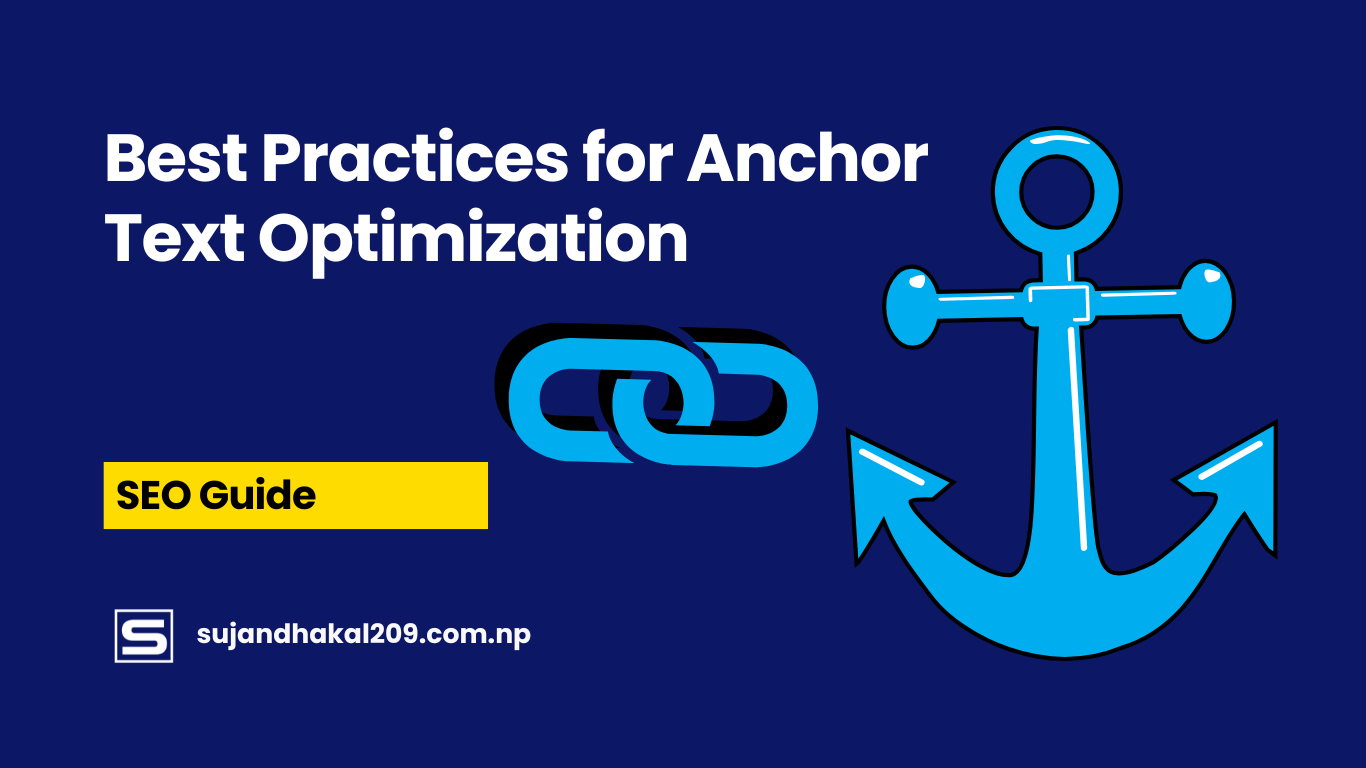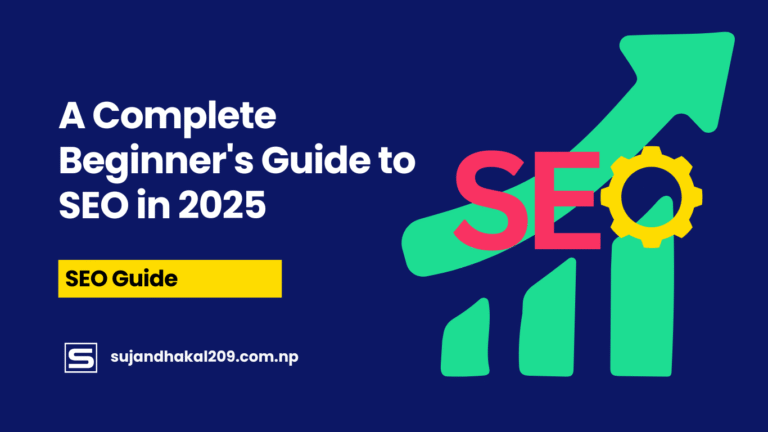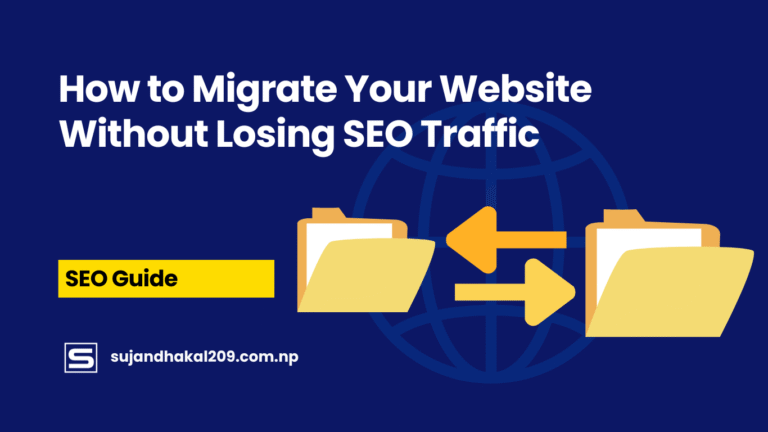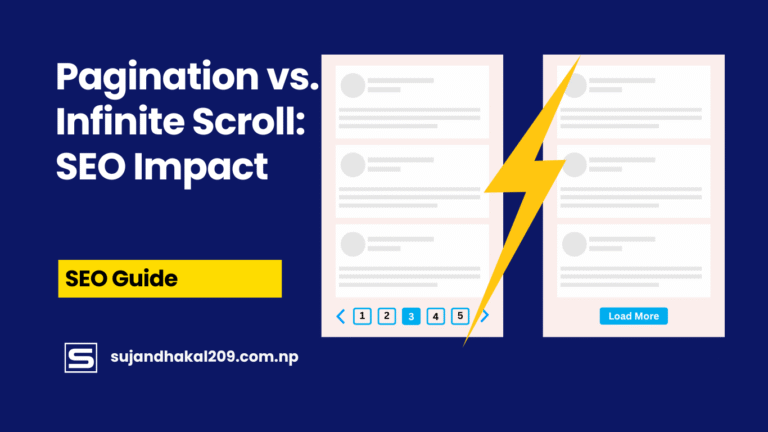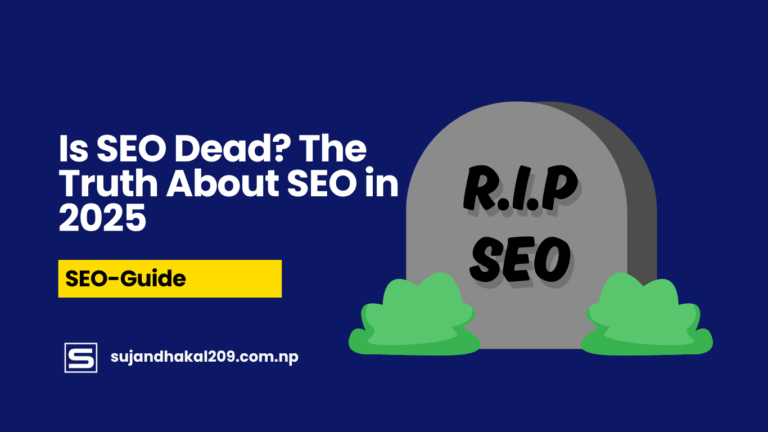If you’ve ever clicked on a blue, underlined phrase in a blog post and been taken to another page, you’ve experienced anchor text. While it may seem like a simple part of web content, it actually plays a critical role in search engine optimization (SEO). Whether you’re trying to boost your own rankings or build a smart internal linking strategy, understanding how to use anchor text correctly can make or break your SEO efforts.
Think of anchor text like a road sign—it tells both users and search engines what to expect on the other side of the click. Used right, it adds clarity, authority, and relevance. Used wrong, it can trigger penalties or simply confuse your visitors. So, let’s dig into what makes for smart anchor text optimization and how to apply it effectively across your content.
Introduction to Anchor Text in SEO
What is Anchor Text?
Anchor text is the clickable text in a hyperlink. It’s what users see when you embed a link within content. For example, in the phrase “learn more about SEO tools,” the words “SEO tools” might be the anchor text that links to another page discussing those tools.
Anchor text is enclosed in HTML tags like this: <a href="https://example.com">SEO tools</a>. It serves two purposes: guiding users and signaling to search engines what the linked page is about. It’s more than decoration—it’s a semantic clue.
Different types of anchor text can convey different meanings. The structure and wording of your anchor text can influence how Google interprets the relationship between your pages and determines your site’s relevance and authority.
Importance of Anchor Text for SEO
Anchor text acts as a ranking signal in Google’s algorithm. When a page is linked using specific text, search engines assume that the target page is relevant to that anchor. This is especially powerful in backlinking, where other sites are effectively vouching for you using descriptive terms.
Additionally, anchor text improves user experience. It helps readers navigate your site more easily and find relevant content. When done right, it keeps people engaged, reduces bounce rates, and boosts time on site—all of which are positive SEO signals.
But misuse anchor text—like keyword stuffing or using irrelevant links—and you risk penalization from algorithms like Google’s Penguin. So, it’s not just about using anchor text—it’s about using it wisely.
Types of Anchor Text
Exact Match Anchor Text
This is when the anchor text is an exact match of the keyword you’re targeting. For instance, if you want to rank for “best SEO tools,” and your anchor is exactly “best SEO tools,” that’s an exact match.
While this was once the golden standard in link building, overuse of exact match anchors now signals spam. Use it sparingly and make sure it aligns naturally with the content.
Partial Match Anchor Text
This anchor contains variations of your keyword. For example, instead of just “best SEO tools,” you might use “check out these top SEO tools.” It includes the keyword but isn’t a direct match.
Partial match anchors are safer and more natural. They offer keyword relevance without looking manipulative. In most cases, this is your best bet for SEO-friendly linking.
Branded Anchor Text
This uses a brand name as the anchor. For example: “Check out Moz’s latest SEO reports.” Branded anchors help build trust and authority. They’re perfect for citing sources or linking to your own branded content.
Search engines typically view branded anchors as safe and legitimate, making them a great addition to any linking strategy.
Naked URLs
Sometimes the anchor is just the raw URL itself, like “https://moz.com.” While this isn’t the most user-friendly form, it can be useful in citations or reference sections. From an SEO standpoint, it’s considered neutral.
Generic Anchor Text
These are non-descriptive anchors like “click here,” “read more,” or “visit this page.” While they can be functional, they don’t offer any SEO value. Use them when absolutely necessary, but always prefer descriptive alternatives when possible.
Why Anchor Text Optimization Matters
Signals for Search Engines
Anchor text is a direct cue for search engines to understand what the linked page is about. When you optimize it well, you’re effectively telling Google, “Hey, this page is about this topic.” Multiply that over many high-quality links, and you’ve got a serious SEO boost.
Bad anchor text, on the other hand, confuses search engines—or worse, misleads them. And that’s when penalties come into play. Smart optimization ensures clarity, relevance, and consistency across your site.
Enhancing User Experience
Users rely on anchor text to know what to expect. When your anchor is vague or misleading, it disrupts the flow and damages trust. On the flip side, good anchor text makes your site intuitive and user-friendly. It helps visitors move through your content seamlessly.
Imagine being on a road trip and seeing a sign that says “Destination.” Confusing, right? That’s what “click here” feels like without context. Make your anchor text a roadmap, not a riddle.
Contextual Relevance in SEO
Context is king. Anchor text should not only match the destination page but also fit naturally within the surrounding content. Search engines analyze the whole sentence, paragraph, and even the page content to assess relevance.
So if you’re linking to a page about local SEO, don’t just drop the anchor “marketing tips” in a paragraph about social media. Make sure the anchor and its environment align with the topic of the target page. This boosts contextual authority and strengthens your overall site structure.
Best Practices for Anchor Text Optimization
Keep It Relevant and Natural
When optimizing anchor text, relevance is your number one priority. The anchor text should clearly indicate what the linked page is about and match the topic being discussed in the surrounding text. Don’t force keywords just for the sake of SEO—write like you’re talking to a real person.
A natural anchor text reads smoothly within the sentence. For instance, if you’re linking to a blog post about content marketing strategies, an anchor like “content marketing tips” is both relevant and natural when placed in a sentence like: “To stay ahead, explore these proven content marketing tips.”
Avoid awkward phrases that make readers pause or question the intent. If you wouldn’t say it out loud, don’t use it as anchor text. Google is smart enough to detect when links are being unnaturally shoved into content, and users won’t trust links that feel forced.
Diversify Your Anchor Text Portfolio
Using the same anchor text repeatedly across multiple links sends spammy signals to search engines. Diversification is key. Mix it up with branded, partial match, long-tail, and even generic anchors when appropriate. Think of your anchor text like seasoning—too much of one type ruins the flavor.
Diversity in anchor text mimics natural linking patterns. No one links to the same page in the exact same way every time. Let your anchor text flow with the narrative and vary in structure to appear authentic and non-manipulative.
One effective tactic is to use variations of your primary keyword. For example, instead of always using “on-page SEO,” alternate with “SEO for web pages,” “optimize on-site SEO,” or “technical and on-page tactics.”
Avoid Over-Optimization
Over-optimization happens when you’re too aggressive with exact match keywords. This was a common black-hat tactic pre-2012, before Google rolled out its Penguin algorithm, which penalized sites that gamed the system through link manipulation.
Signs of over-optimization include:
- Repeating exact-match anchor text on multiple links
- Forcing keywords in irrelevant contexts
- Overloading a page with excessive internal links
Instead, aim for balance. Optimize with a mix of anchor text types and keep a close eye on your anchor text ratios. Tools like Ahrefs and SEMrush can help analyze your anchor profile to identify overuse and prevent penalties.
Use Anchor Text in Strategic Locations
Where you place your anchor text within your content matters just as much as what it says. Anchor links positioned in the introduction or early in the content tend to carry more weight. Google gives more importance to content that’s placed higher on the page because it’s likely more relevant.
Also, make your anchor links part of the main content rather than in footers, sidebars, or widgets. Links in body content are contextually richer and carry more SEO juice.
Think of it like a movie—you want your main plot points to appear early and often, not buried in the credits. Position your most important anchor text links where they’ll be seen, clicked, and valued by both users and search engines.
Internal Linking Anchor Text Strategy
Connecting Relevant Pages
Internal linking is the backbone of a solid on-page SEO strategy. Smart internal linking doesn’t just connect random pages—it links pages that are topically and contextually related. This helps both users and search engines understand your site’s structure and thematic depth.
If you have a blog post on “email marketing strategies,” and another on “lead generation,” those topics naturally complement each other. Linking them through descriptive anchor text like “generate leads through email marketing” helps pass authority and boost topical relevance.
When your internal links make sense, users stay longer, bounce rates drop, and you create a stronger internal network that supports your SEO goals.
Using Descriptive, Specific Anchors
Vague anchors like “click here” or “read more” offer no context. Use descriptive phrases that accurately reflect the content of the destination page. This not only improves SEO but enhances accessibility for screen readers and improves user trust.
Specific anchors also help Google understand the page’s relevance, improving its chance of ranking for related queries. Instead of saying “learn more,” say “learn more about mobile-friendly SEO.”
The more context you provide, the better. Users appreciate knowing what they’re clicking on, and search engines appreciate the clarity.
Link Depth and Click Hierarchy
Not all pages on your site are created equal. Some deserve more internal links based on their importance—these are your cornerstone content pages. A proper internal linking strategy ensures that high-priority pages aren’t buried several clicks deep.
Keep key pages within 2–3 clicks from your homepage using internal links. Anchor text should help funnel users to these pages efficiently. This click hierarchy tells search engines which content matters most, allowing them to assign appropriate ranking signals.
So, use descriptive anchor text not just for SEO, but as a GPS that guides both Google and your readers through your content maze.
External Linking and Backlink Anchor Text
Choosing Anchor Text for Backlinks
Backlinks are the internet’s version of word-of-mouth. When other sites link to yours, the anchor text they use plays a massive role in how Google evaluates the credibility and relevance of your site.
While you can’t always control how others link to you, you can influence it—especially when you’re doing guest posting, influencer collaborations, or partner content. Suggest anchors that naturally fit into the partner site’s content, ideally using partial match or branded text.
The key is balance. If every backlink uses the same keyword-heavy anchor, it looks unnatural. A diverse, healthy backlink profile includes a range of anchors: branded, URL, partial match, and even some generics.
Natural Link Profile Development
Google’s algorithms have matured to recognize artificial link-building. They expect variation. A “natural” anchor text profile mimics organic behavior—different sites link using different text, in different contexts, with varying domain authority.
Here’s what a healthy backlink anchor profile might look like:
- 30% branded
- 25% partial match
- 15% naked URL
- 10% exact match
- 20% generic
Keeping these ratios in check helps avoid algorithmic red flags. Use tools like Ahrefs’ “Anchors” report to monitor your link profile and course-correct if needed.
Disavowing Spammy Links with Overused Anchors
Sometimes, spammy sites will link to you using low-quality or keyword-stuffed anchors. These toxic backlinks can harm your site’s SEO and credibility. That’s where disavowing comes in.
Google Search Console lets you disavow bad links, essentially telling Google: “Ignore this; it doesn’t represent me.” But don’t go disavow-happy—only remove links that are clearly manipulative or irrelevant.
Clean, well-maintained backlinks ensure your anchor text strategy remains solid from both internal and external angles.
Common Anchor Text Mistakes to Avoid
Repeating the Same Anchor Text
Repetition is one of the most common and damaging mistakes. Using the exact same anchor text over and over dilutes your link strategy and triggers spam alerts. Remember, variety shows authenticity.
Avoid creating “anchor text footprints”—visible patterns that show manipulation. Instead, spread your keywords naturally across different phrases and contexts.
Using Generic Phrases Without Context
Phrases like “click here,” “this page,” or “more info” might serve a function, but they do little for SEO. They give no indication of what the destination content is about.
Always provide context. Instead of saying “read more,” say “read more about optimizing your anchor text.” This small tweak improves usability, accessibility, and ranking potential.
Stuffing Keywords in Anchor Text
Keyword stuffing isn’t just outdated—it’s dangerous. Cramming exact match keywords into every anchor link feels unnatural and looks spammy. Google’s Penguin algorithm specifically targets this kind of manipulation.
Aim for readability and flow. Anchor text should make sense to a human reader first. If it does that, it’ll likely satisfy Google as well.
Google’s Guidelines on Anchor Text
Penguin Algorithm and Anchor Text Penalties
When Google rolled out its Penguin algorithm in 2012, the SEO world shook. The Penguin update specifically targeted websites using manipulative link practices—chief among them, over-optimized anchor text. If your backlink profile was flooded with exact match keywords, you were in trouble.
Sites that once ranked on page one found themselves buried or even deindexed. Why? Because Google determined that too many exact-match anchors meant someone was trying to game the system.
To stay safe, modern SEO requires you to walk a fine line. Yes, anchor text helps Google understand your page—but only when it’s used naturally and sparingly. Penguin now works in real-time, so if you clean up your anchor text profile and disavow bad links, your rankings can recover faster than in the past.
The lesson: don’t try to manipulate your rankings through anchor text. Instead, use it to guide, inform, and connect in a way that feels organic.
Best Practices from Google’s SEO Starter Guide
Google’s own SEO Starter Guide provides useful recommendations for using anchor text effectively:
- Use descriptive text: Google wants anchors that explain what users can expect on the linked page.
- Avoid generic anchors: “Click here” and “this page” are discouraged unless absolutely necessary.
- Make links accessible: Don’t rely solely on anchor text color or style; ensure your links are distinguishable and easy to use.
Follow these guidelines and you’ll not only stay on Google’s good side, but also provide a better experience for your readers.
Tools for Anchor Text Analysis and Optimization
Ahrefs
Ahrefs is a go-to SEO tool for deep link analysis. Its “Anchors” report allows you to see:
- The most common anchor texts linking to your site
- The referring domains using each anchor
- The total number of backlinks per anchor
You can use this data to assess your anchor text diversity, identify over-optimized terms, and monitor new links. It’s also incredibly helpful for analyzing competitors’ backlink profiles and reverse-engineering what’s working for them.
Ahrefs also helps you spot toxic backlinks using spammy anchor text—giving you the insight to disavow them before they hurt your rankings.
SEMrush
SEMrush offers similar capabilities, especially in its “Backlink Audit” and “Anchor Text” sections. It grades the risk associated with each link and gives suggestions for clean-up. You can even automate outreach to request link removal.
One unique feature of SEMrush is its historical data, allowing you to track how your anchor text profile has evolved over time—a great tool for auditing your SEO strategy over months or years.
Moz Link Explorer
Moz’s Link Explorer gives you a snapshot of the most common anchor text associated with your domain. While not as robust as Ahrefs or SEMrush in terms of backlink volume, it’s intuitive and great for beginners.
Moz also integrates with Page Authority (PA) and Domain Authority (DA), helping you correlate anchor text distribution with your site’s trust signals.
Google Search Console
Google’s own toolset remains crucial. Under the “Links” report in Search Console, you’ll find the most commonly used anchor texts pointing to your site. While it’s not as detailed as paid tools, it’s free and accurate—straight from the source.
Use Search Console to cross-reference with paid tools and ensure consistency in your analysis. If something’s flagged here, it’s definitely worth investigating.
Case Studies: Anchor Text in Action
Successful Examples of Optimization
Let’s look at HubSpot—a company renowned for its SEO strategy. Their blog posts often use anchor text that’s both keyword-rich and user-centric. For instance, a post on email automation might link to another using “automated email workflows” as anchor text—informative, natural, and spot-on.
Another example is Backlinko. Brian Dean is a master of context-rich anchor usage. He often uses partial matches and branded anchors in a storytelling format, proving you don’t need to be robotic with your link building to rank well.
These companies show how balancing SEO with user experience can yield long-term results. Their anchor strategies focus on trust, usability, and relevance—and Google rewards them with visibility.
Real-World Penalties Due to Anchor Text Spam
On the flip side, there are cautionary tales. Several niche affiliate sites lost rankings overnight due to over-optimized anchor text. One site in the “best gaming laptops” niche used that exact phrase in almost every inbound link. Google saw it as unnatural manipulation and dropped them from page one.
Even worse, when a link-building agency spammed blog comment sections with exact-match keywords as anchor text, the client site was hit with a manual penalty. They had to disavow hundreds of links and wait months to regain lost traffic.
These cases prove that anchor text optimization must be subtle, smart, and user-friendly—not just keyword-heavy.
Advanced Anchor Text Tactics
Latent Semantic Indexing (LSI) Keywords in Anchors
LSI keywords are conceptually related terms that help search engines better understand the context of your content. Including these in anchor text adds depth and variation without sounding forced.
For example, if your main keyword is “email marketing tools,” you might use anchor variations like:
- “tools for automated email campaigns”
- “email software for small businesses”
- “grow your list with email tools”
These LSI variations improve topical relevance and avoid over-optimization. They’re especially powerful when used across multiple linking domains.
Using Anchor Text for Topic Clustering
Topic clustering involves creating a pillar page supported by related content pages, all interlinked through strategic anchor text. For example, if your pillar content is “Digital Marketing,” subtopics like “SEO basics,” “content marketing,” and “social media strategies” link back to it with relevant anchors.
This creates a web of interrelated content that enhances your site’s authority on a subject. Anchor text plays a central role in signaling these relationships to search engines.
When done right, topic clusters turn your site into a go-to resource—and Google takes notice.
The Future of Anchor Text Optimization
AI and Natural Language Processing in SEO
Search engines are getting smarter thanks to AI and natural language processing (NLP). Google’s BERT and MUM algorithms now analyze the context of entire passages—not just keywords.
This shift means anchor text doesn’t need to be exact to be effective. Instead, focus on relevance, clarity, and flow. NLP enables search engines to understand nuance, so descriptive phrases like “tools to improve email outreach” are just as powerful as exact-match anchors.
The takeaway? Write for humans, and Google will follow.
Voice Search and Impact on Anchor Text
With the rise of voice search, people are searching in full questions and conversational phrases. That changes how we think about anchor text. Rather than targeting short, keyword-stuffed links, opt for longer, more natural phrases that mimic spoken language.
For instance, instead of “SEO tools,” a better anchor might be “what tools can improve SEO performance.” These longer anchors align better with modern search intent and position your content for rich snippets.
The future of anchor text isn’t just about keywords—it’s about communication.
Conclusion
Anchor text optimization is far more than a technical SEO tactic—it’s a foundational piece of a smart, user-friendly digital strategy. From shaping how search engines understand your site to guiding users through a seamless experience, anchor text has a profound impact on both visibility and usability.
We’ve explored the full spectrum—from understanding the types of anchor text to using them effectively in internal and external linking strategies. You’ve seen what works (natural, diversified, context-rich anchors) and what doesn’t (keyword stuffing, repetition, generic links). You’ve also seen how tools like Ahrefs and Google Search Console can help you monitor and refine your strategy in real time.
Search engines continue to evolve. Algorithms like Penguin, BERT, and MUM are becoming more nuanced in how they interpret language, making relevance and naturalness more important than ever. This means that as SEO professionals or content creators, our approach must also evolve. It’s not just about gaming the system—it’s about building trust, providing clarity, and offering real value to users.
Anchor text optimization isn’t a one-time task. It’s an ongoing process that requires thoughtful planning, regular audits, and a user-first mindset. So the next time you insert a link, ask yourself: does this anchor help the user? Is it relevant? Does it support the content’s intent?
Master these elements, and your anchor text will do more than connect pages—it’ll connect users with exactly what they’re looking for, and search engines with the context they need to reward you.
FAQs
1. What is the safest anchor text ratio?
There’s no one-size-fits-all number, but a balanced profile generally includes:
- 30–40% branded anchor text
- 20–30% partial match
- 10–15% exact match
- The rest spread across generic and naked URLs
The key is diversity. Too much of any one type—especially exact match—can trigger Google penalties.
2. How many anchor links should be on a page?
There’s no strict limit, but too many links can dilute SEO value and overwhelm readers. Aim for quality over quantity. For most content, 3–10 internal links using optimized anchor text is a healthy range. Keep links relevant, useful, and strategically placed.
3. Should all anchor text be keyword-rich?
No. While keyword-rich anchors can boost SEO, relying on them exclusively is risky. Mix in branded, generic, and contextual phrases. Focus on what’s natural for the reader. Google values relevance and diversity far more than just keywords.
4. What is the difference between internal and external anchor text?
Internal anchor text links to other pages within your website, helping users and search engines navigate your site structure. External anchor text points to pages on other domains, and often carries more weight in SEO—especially when those links come from authoritative sites. Both require strategic anchor optimization.
5. How can I check my anchor text profile?
Use tools like Ahrefs, SEMrush, or Moz Link Explorer to audit your anchor text distribution. Look for:
- Overuse of exact match anchors
- Lack of diversity
- Spammy backlinks
Also, use Google Search Console to view which anchor texts are most frequently used to link to your site.

